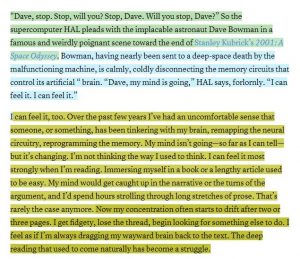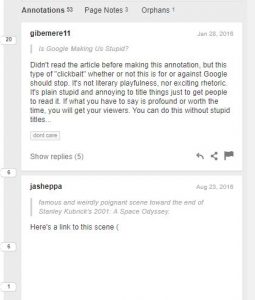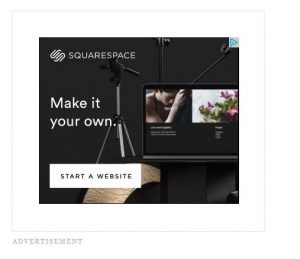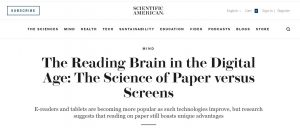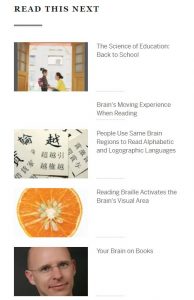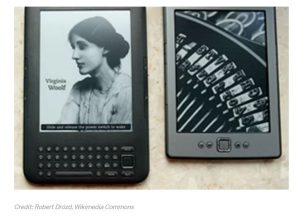Kelsey Wolfsheimer, Alaina Savarese, Lauren Dawkins, & Kail-La Smith
Intro/Purpose: Kelsey
Our product is a simulation, virtual reality training for first responders including both EMTs and Firefighters. It is an interactive experience where virtual reality systems such as Vive or Oculus, would be used as the trainees go through a variety of interactive high pressure simulations where they are doing what they would do in real life through the gaming system. Our training would include all the basics of first responder training, which consists of 7 modules for EMTs and the necessary training for the firefighters along with the basic EMT training as well.
Trainees need this product because it is a hands-on, real-life simulation training that is cost-efficient and doesn’t put lives in danger. According to two articles, 70% of all firefighters are volunteers (“U.S. fire department profile” Haynes), while “EMS volunteers answer close to half of the nation’s 911 calls – possibly up to 90% in the most rural states” (“Why volunteers are critical to the future of EMS.” Magee). This training would make it easier for the volunteers to get proper training since a large amount of the volunteers most likely don’t have a ton of money to dish out. This product will also give the instructors a better understanding of the trainee, by determining if they can handle real life situations without cracking under pressure. Some people are good test takers but fail in the real world, while others succeed in real life situations, but are bad test takers. This product would allow the instructors to see how efficient the trainees are at each of the tasks that are necessary rather than just solely remembering terms from the lecture.
In order to create the most efficient training simulation, we need to ensure that we cover every part that is vital to training. The EMT training involves seven different training modules. The first is the preparatory module. This includes the introduction to Emergency Medical Care, the well-being of the EMT Basic, medical/legal and ethical issues, the human body, baseline vitals, SAMPLE history, and the lifting and moving of patients. The second module is known as the airway module. It includes mouth-to-mask with supplemental oxygen, airway maintenance (Oral, Nasal and Suctioning), and oxygen administration. The next module is known as the trauma assessment and documentation module and includes scene size-up, initial assessment, focused history and physical exams on trauma patients, focused history and physical exam on medical patients, detailed physician exam, on-going assessment, communications and documentation. The next module is known as the medical assessment module and includes general Pharmacology, respiratory emergencies, cardiovascular emergencies, diabetes/altered mental status, allergies, poisoning/overdose, environmental emergencies, behavioral emergencies and Obstetrics/Gynecology. The next module, known as trauma emergencies, covers bleeding and shock, soft tissue injuries, musculoskeletal care and injuries to the head and spine. The next one is dedicated to pediatric and geriatric emergencies, including infants and children as well as geriatric patients. The last module is known as operations. This section covers ambulance operations, gaining access and overviews. There is also an option of an eighth module called advanced airways, that our training will not cover (“EMT Training” EMTResources.com).
The firefighter training will cover all of the basic EMT training, listed above, as well as the necessary training that is required for firefighters. Each station requires a different amount of training and different training subjects, but the majority follows the same basic training objectives. Their training includes learning how to deal with building fires, how to prevent and fight fires, how to treat people injured in a fire, and how to use fire equipment such as ladders, hoses, axes, fire extinguishers and chain saws. They also have to learn how to manage hazardous materials, inspect smoke detectors, how to conduct search and rescue procedures as well as learn about fire science and local building codes. The last part of their basic training is learning how to react to challenging situations like fires in subways, high-rises, cars or crawl spaces (“Fireman Training Programs and Requirements.” Study.com).
We are directing our project towards two different audiences. Our primary audience is instructors for first responder training and training centers. If training centers had this technology then more people would want to go to these centers since it could potentially save lives, be cost efficient, and provide better lessons so trainees can get a better understanding of what they are learning. It would benefit instructors as well because they would run the simulations along with giving short lectures while cutting down the amount of time that they have to teach lectures.This simulation would also help put a good rep on the specific training center and the instructors that use it. Their trainees would be more prepared in real life situations and not panic once they are in the workforce compared to the trainees who didn’t have simulation training. The secondary audience is for people who are looking to become EMTs and Firefighters. They want to be able to find the best training center where their life isn’t at such a high risk and want to make sure they learn as much as they possibly can. With so many people being kinesthetic and visual learners, this simulation would be sure to help them retain the knowledge they learn, resulting in more efficient and confident first responders. This would also help the volunteers who are looking for a good but cost efficient training program and with this technology the amount of money needed for training would be cut down significantly.
Learning Outcomes: Kail-La
Our simulation will provide both physical and intellectual development for the users resulting with educational, technical, and employability outcome. The application will provide the necessary basic knowledge for all first responders and firefighters and training. In addition, our application will also provide technical knowledge on specific fire preventions, behaviors, and protection techniques for firefighters. Also, it will provide specific technical use of equipment, tasks as well as skills for both an EMT and/or firefighter. Our application allows one to pick up the necessary skills that employers want you have, specific achievements, understandings, and the personal thrive that makes an individual more likely to gain employment, and success as an EMT and/or firefighter. Our application is made to specifically educate a person in order to become successful in the future. The outcomes will be assessed through quizzes after each section and required hands-on performance that the user must demonstrate individually or in pairs. At the end of the application, there will be a combination of all the sections and hands-on activities for both, essential EMT’s and firefighters.
User Experience/User Interface: Alaina
There are similar programs to ours that exist like the 360 Immersive and SimX. The 360 Immersive application is for your phone and it is only a simulation that the viewer would observe with no interaction (360 Immersive). They also do not focus solely on first responder training. The SimX program is a simulation with a little more hands-on activity (SimX). These programs both lack a fully immersive world with high involvement in their experience. This can be done with our application using the HTC Vive. It is very important that the user has access to the visor, the two controllers, and the motion sensors to get the full experience.
We want to have immersive basic training sessions for first responders that would include CPR training, checking blood pressure and vitals, and placing patients on a spinal board. We also believe that it is important for trainees to have situational training like extracting a patient from a car wreck, rescuing a person from a burning building, or operating emergency equipment.
This is how we imagine our program to operate: Each student will have their own unique avatar similar to that in Ernest Cline’s book, Ready Player One. The student alone or working in partners will put on the VR gear in range of the motion sensors located in the classroom and their instructor will choose which learning experience they are going to do. The student(s) will be fully immersed in that situation whether they are just receiving a dispatch call or learning how to set a broken bone. The instructor will be able to monitor their actions by watching her computer screen which will display what the scenario her students have been placed. This will allow her to be able to assist the students and provide feedback. We want our program to assist in the training of firefighters and EMT’s and be as realistic as possible with real-world experiences.
Implementation Strategy: Kail-La
Our goal isn’t to create an application that’s too expensive. However, cost for the use of the simulation will range between $60 to $100 dollars. Sixty dollars, being the lowest for basic review of basic hands-on activities and one hundred dollars, being the potential highest for use of the entire application. Solution to the price being too high is a better price deal, if the company, group, etc. buys the application once, specifically for use of a large group of people. Technological constraints consists of companies not as equipped or advanced enough for the use of the application. Also, buildings where the application will be used may need to be more advanced and adequate to the size and space needed. However, upgrading one’s company towards a more futuristic setting could be a solution. In order to reach out to our customers, we will advertise and promote our application as much as we can through advertisements.
Long-term Vision: Kelsey
To keep our prototype focused and manageable we have to limit it in several ways. The first way we are limiting our prototype is by doing a hands on, interactive simulation that teaches skills based that are necessary for basic EMT and Firefighter training. This simulation will exclude lessons and will just test the actual skills that are necessary for passing the training. Our prototype won’t completely eliminate lectures or actual class time, but will cut down the time and enhance the lessons by performing what you learned in a real-life situation, but without endangering anyone’s life. We are also going to limit this to interactive experiences only. This means it will have to run on a system like Vive or Oculus and there won’t be any interactive lessons for phones, with the cardboard boxes, where you could use the movement of your head to answer questions or look around, etc. We want this to be like a high pressure, real-life situation where you need to actually act and deal with the situation like you would do in real life.
The next stage of development involves a variety of steps. The first step would be to determine how each training objective would be shown and covered throughout the simulation. Once is it completed we would need to figure out how it would be tested in the actual simulation training and how to depict the variety of situations that are needed to cover each objective. There has to be a variety of situations in which the trainee will be placed during the simulation because not everything in the real world is the same situation, so the different training experiences need to have some sort of variety. We also have to determine how to make the training interactive. Will there be “what would you do?” type quizzes where the situation plays out solely based on what answer they chose, along with the interactive parts where they have to use their own hands and feet? Or should it be only interaction based? Once these developmental factors are determined, we then need to test the simulation trainings throughout the country to make sure it is user friendly, works well, and make sure that there are no problems with how the simulation runs.
We have a lot that we would want to accomplish in our five year plan. The first would be getting the program tested, approved and then out to training centers for the simulation training to begin. Once the interactive simulation training is working well, we would eventually make a cheaper program for trainees to use to help study for the actual simulation and for real-life tests. This program would be able to be used on a phone and in a cardboard box. It can also be more a “what would you do” type of quiz in the simulation where the answer the trainee gives is what determines what happens next. This would also be more practice for firefighters and EMTs. We would also like to include a more in depth training for Intermediate EMTs and Paramedics, since the Basic EMT training doesn’t cover what they need to know.
References
360immersive.com. (2017). 360immersive – – VR Training – Virtual Reality. [online] Available at: https://360immersive.com/ [Accessed 1 Dec. 2017].
Cline, E. (2011). Ready player one. New York: Crown.
EMS1. (2017). Why volunteers are critical to the future of EMS. [online] Available at: http://www.ems1.com/community-awareness/articles/2169080-Why-volunteers-are-critical-to-the-future-of-EMS/. [Accessed 1 Dec. 2017].
Emt-resources.com. (2017). EMT Resources – for New and Experienced EMTs. [online] Available at: http://www.emt-resources.com/ [Accessed 1 Dec. 2017].
Nfpa.org. (2017). NFPA report – U.S. fire department profile. [online] Available at: http://www.nfpa.org/News-and-Research/Fire-statistics-and-reports/Fire-statistics/The-fire-service/Administration/US-fire-department-profile. [Accessed 1 Dec. 2017].
Simxar.com. (2017). SimX | Virtual and Augmented Reality Medical Training Software. [online] Available at: https://www.simxar.com/ [Accessed 1 Dec. 2017].
Study.com. (2017). Fireman Training Programs and Requirements. [online] Available at: https://study.com/fireman_training.html [Accessed 1 Dec. 2017].
Storyboard:
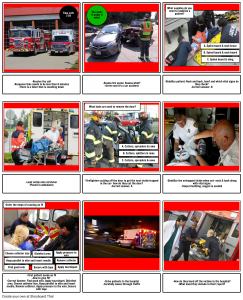
Presentation:


